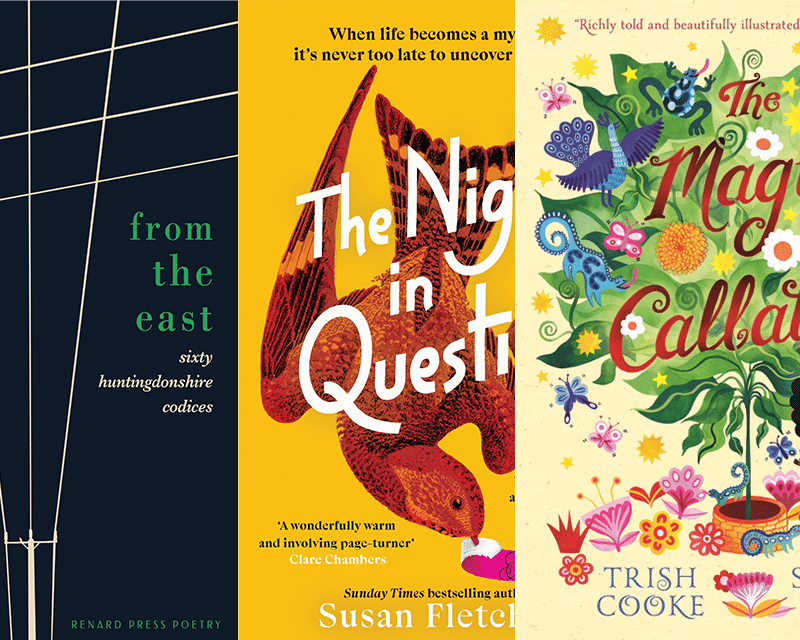- Collected
- Article
Character Studies
Making sense of plot

- 26 November, 2018
- Beatrice Colin
‘The trouble with writing fiction is that it has to make sense, whereas real life doesn’t’, said the novelist Iain Banks.
There is nothing more exhilarating than beginning to write a new novel. You strike a match and stride out into the dark, foolishly, gullibly, believing that somehow this one will be easier than the last one, that it will all ‘make sense’ in the end. The first line is a promise of what is to come, a declaration of intention, of style, of voice. The line better be a good one because in the days and years to come, you may return to it over and over, using it as a prompt to remember why you wanted to write this particular book in the first place.
I am a compulsive walker around the block, a scribbler of many notes, a sketcher of elaborate maps and diagrams and a puller-out of hair. I would say I’m a planner but the truth is that my stories never quite turn out the way I imagine they will. I cannot see around corners and likewise I find it almost impossible to stick to the rough plot that I have tentatively stitched together in my head before I start writing.
Sometimes, I wish it were otherwise. It would save so much time and effort. For every story I’ve written, the plot has been the hardest element to wrestle into shape and to make sense of. Metaphorically speaking there are many stubbed toes before I find the light switch.
On the surface, it looks so straightforward, a conflict followed by complications, a climax and a resolution. It’s all about cause and effect and so I try and imagine a plot that looks like an enormous clock mechanism where one event, one cog turning, prompts the next. Some writers are even more economical and map out a story on one page before they begin. An elevator pitch is even shorter, just twenty words.
And yet I would rather scrub the bathroom floor than write a synopsis and I would never commit to a neatly honed one-page plot. Instead my creative instincts push me in the other direction towards the chaos of improvisation, the midnight burn of inspiration and the radio fuzz between the stations of the subconscious. I aim to make sense of the pandemonium of lived experience through the process of writing and not to walk backwards from the end with a map in my hand.
Most of my stories deal with place, history and relationships. Researching place is a joy. All that changes is the weather. History too is arguably static. There are facts, dates, photographic evidence. But once I have the setting and the context, I come to characters, and it is here where the real work begins.
As a lecturer in creative writing, I teach my students that characters should have problems that need to be solved. Anna Karenina falls in love with Vronsky; Ahab wants to catch and kill the whale. If characters were happy, solvent and in love with their partners, there would be no story. Faced with insolvency, infidelity, depression, world war, an elusive white whale – whatever – they must act.
In my last novel, To Capture What We Cannot Keep, my protagonist Cait, a young widow, must find a reason to turn down an offer of marriage from a wealthy but repulsive older man. She takes a job as a chaperone, goes to Paris and falls in love with the man who her young charge has her eye on. Of course, everything goes wrong; the man is an engineer whose current project is the Eiffel Tower and what’s more his family would never allow him to marry someone like Cait.
Although the plot sounds solid now, it wasn’t always that way. I wrote many drafts and in each one the characters evolved. They gained back stories, occupations, lovers, responsibilities and longings and eventually, once they had lived in my story, acted or reacted, the plot came into focus.
People, and therefore characters, are complex and unpredictable — thank goodness. Novels with plots generated by a computer programme are a terrifying and depressing prospect. There is a scene in the film In Bruges where one character meets another in a park after being instructed to kill him. The other character, however, is suicidal, and so the first character forgets his initial task and instead talks him out of it. It is a brilliant piece of drama because it confounds our expectations and reveals the characters’ true natures by their actions.
When students ask me if I think their new ideas for plot will work, I tell them the only way to find out is to try them. That’s what I do. Imagine the crummiest theatre, with broken red-velvet seats and the lingering smell of stale cigarette smoke. There am I with a cup of cold coffee in my hand in the stalls, placing my characters in various situations and then making them play out my scenarios. I am ruthless, sadistic, mean, a killer even, as my characters clash and make the wrong decisions, run away, do terrible things, fall in love, lie, betray each other, are motivated by pride or greed, altruism or any other emotion. What am I looking for? I suppose the answer is truth and to be surprised as I discover who they are and why.
‘Weren’t you sad when Anna killed herself?’ a reader once asked about a character in one of my other novels. I was not sad. I was happy that Anna had decided to do something that I couldn’t have predicted. In death, she had come to life.
F. Scott Fitzgerald allegedly said, ‘character is plot, plot is character.’ I started this piece by writing about strategies for working out plot; the arc of the scene, the three-act structure and the importance of the turning point. Like many strategies, however, these sound good in theory but when faced with a 300-page draft, they fall by the wayside. There is no recipe for turning in a convincing plot, no short cuts. It’s about shaping an entity that keeps changing shape. If my plot is not working, I go back to my protagonists, take them to my crummy theatre and make them live a little once more.
I once taught a writing workshop with a group of ex-offenders. I asked them to come up with a character and most of them sketched out one that wasn’t a million miles from themselves. I then asked them to think of the worst thing that could happen to that character. One of them, I think his name was Joe, a wiry, tattooed former drug addict and petty criminal, wrote a story about his character falling in love. Why, we asked before he read it out, would you chose that? He read his story and we found out. Joe’s character falls in love and then realizes that he is too damaged to sustain a relationship, too ruined to be able to return the love that is lavished on him by a woman. It was a tragedy of Aristotelian proportions, a plot of such sensitivity that it made grown men cry, Joe included, because he had just discovered something about himself that he hadn’t realized.
As writers, can we ever know our characters completely? Do we ever really know ourselves? It’s why I write and read fiction: to try and find out.
You might also like:
No facts, only versions
Memoirs are as much about what is excluded as what is included. This edition examines how you can evoke the…
RLF Fellows’ News: April 2024
Publishing News RLF Fellow Trish Cooke’s new children’s book, The Magic Callaloo, is set to be published by Walker Books…
Susan Fletcher on outsiders in fiction – literal and imagined
I’ve always known that I’ve preferred to be outside. To be an outsider – literally, and, specifically, amongst wild places…


